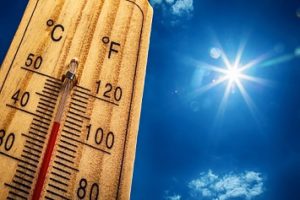California’s hot season is almost here, and Cal/OSHA is reminding employers to protect workers against the state’s searing summer heat. California has had a heat illness prevention rule in place for outdoor workers since 2005; it was most recently revised in 2015.

MarianVejcik / iStock / Getty Images Plus / Getty Images
Most employers are aware of the basics of the standard – the requirements to provide annual training, copious amounts of fresh cool water and easy access to shade; and to create a written compliance program. But here are some additional things employers need to keep in mind:
- Some structures count as “outdoor” workplaces. There’s an indoor heat illness prevention standard in the works, but the current standard applies only to outdoor workplaces. Some workplaces are obviously “outdoors,” but there are a few gray areas. In general, Cal/OSHA considers a workplace an “indoor” workplace if it provides some measure of protection from the heat, such as ventilation and shade. But some structures may be considered “outdoor” workplaces by Cal/OSHA if, rather than helping to reduce heat exposure, they intensify it. By this standard, Cal/OSHA asserts that “Sheds, packing sheds, and partial or temporary structures such as tents, lean-tos, and structures with one or more open sides can be either indoor or outdoor workplaces depending on the circumstances.”
- Cal/OSHA takes enforcement seriously. Cal/OSHA conducts targeted enforcement inspections during the summer months at high-risk outdoor worksites. Targeted industries include agriculture, landscaping and construction. Inspectors are instructed to ask both supervisory and non-supervisory employees about training methods, and to assess their comprehension. The most frequently cited violation is failure to have a proper written heat illness prevention plan specific to the worksite.
- Workers should understand their training. Under the standard, training must be provided in a language workers understand. Because so many construction and agricultural workers are immigrants whose native language is Spanish, Cal/OSHA provides most of its heat illness prevention materials and training sessions in both English and Spanish. Selected fact sheets, videos and posters are also available in Punjabi, Hmong, and Mixteco on Cal/OSHA’s 99 Calor webpage.
- Supervisors need additional training. All employees need to know the basic risk factors for heat illness, how to prevent it, and how to recognize and respond to signs and symptoms of it. Supervisors should receive additional training in how to monitor weather reports and taking appropriate action in response to predicted hot weather.
- Some industries must comply with high-heat provisions. When the temperature exceeds 95 deg. F, employers in agriculture, construction, landscaping, oil and gas extraction, and certain types of transportation and delivery operations must implement close monitoring of employees and other high-heat provisions.
- Agricultural employers are subject to even more stringent requirements. In high-heat conditions, agricultural employers must require workers to take preventive cool-down rest periods for 10 minutes out of every two hours.
